Books, Art, Prints, & Posters, Original Drawing (340 results)
Product Type Clear
- All Product Types
- Books (335)
- Magazines & Periodicals
- Comics
- Sheet Music
- Art, Prints & Posters (5)
- Photographs
- Maps
-
Manuscripts &
Paper Collectibles
Condition
Binding
Collectible Attributes
- First Edition (34)
- Signed (15)
- Dust Jacket (19)
- Seller-Supplied Images
- Not Printed On Demand
Seller Location
Seller Rating
-
[.] Nova auris internae delineatio
Published by Venezia, Giovanni Antonio Giuliani, Venezia, 1645
Seller: Libreria Alberto Govi di F. Govi Sas, Modena, Italy
Condition: Buono (Good). 4to. [4] leaves. Collation: A4. Printer's device on title page (an eagle with spread wings above a vase containing three lilies supported by a hand coming out of the clouds, in a figurative frame). Woodcut initial and headpiece. On l. A3r full-page engraving by Giacomo Pecini (c. 1617-1669) containing six numbered figures. Some light foxing, traces of folding as the pamphlet was presumably sent as a letter, a very good, wide-margined copy. EXCEEDINGLY RARE ORIGINAL EDITION (first issue) of the most accurate description of the ear up to its time.The work, sent as a letter - the dedication is dated Venice, May 10, 1645 - to the a Danish physician, mathematician, and theologian Thomas Bartholin (1616-1680), became immediately sought-after and rare. Its fame and importance are due to the engraved plate containing six figures that offer an extremely accurate and analytical description of the middle and inner ear. Folli describes some structures of the hearing organ never previously observed and, among the many remarkable morphological details showed in the plate and described in the pamphlet, of particular importance is the depiction in figure 2 (Figura Secunda) of the long process of the malleus, also called ?Folli or Follian process?, that is a slender spur running anteriorly from the neck of the malleus toward the membrane of the tympanum. Folli also identifies the lenticular process of the anvil which he calls ?os globulus?, whose discovery is attributed to S. de Le Boë. However, Folli mistakenly considers it as an independent bone. Figure 3 (Figura Tertia) gives ?the first illustration of the so-called fourth ossicle (stapedis, osseus globulus); it appears to be an extension of the head of the stapes to which it is attached? (C.D. O'Malley & Edwin Clarke, The discovery of the auditory ossicles, in: ?Bulletin of the history of medicine?, September-October 1961, vol. 35, no. 5, p. 441 and fig. 5).The fact that the work is addressed to Bartholin is a clear indication of the esteem and friendship that existed between the two; Folli went often to Padua, where Bartholin resided, both to discuss with him the development of his research and to make practical demonstrations of anatomy. In Bartholin's correspondence (Epistolarium medicinalium a doctis vel ad doctos scriptarum centuriae, Hagae Comitum, 1740, cent. I, epist. LXXII, p. 251), besides the Nova auris there is another letter written by Folli, dated 4 November 1644 and titled Observationes quaedam anatomicae, which contains several anatomical observations on the skin, peritoneum, cardiac ventricular ulcerations, and intestinal worms. Bartholin also contributed to the circulation of the Nova auris internae delineatio as is shown in the copy now preserved at the Augsburg State Library which bears his dedication to the German physician Lucas Schrockius (Lucas von Schröck, 1620-1689).?Caecilius Folius [?] is known to have written three works, but the single one of these which brought him such renown as he ever enjoyed was his ?New Delineation of the Internal Ear,' an opuscule of six fairly well executed plates with a brief explanatory text for each, and said to have been the most nearly accurate description of the inner ear up to its time. More than a hundred years later Antoine Portal said of it, ?This is the manner in which judicious and perspicuous spirits know how to describe in a few words the most complicated objects and how to explain the most interesting discoveries. If everyone had followed the method of Folius there would be fewer books but just as much positive knowledge. It has been said that Vesling used Folius' drawings and description in his own Syntagma Anatomicum, published from Padua in 1641, a date at which Folius would be twenty-six years of age. But Vesling nowhere acknowledged any debt, and the name of Folius is conspicuously absent from the rather long list of anatomists mentioned in Vesling's Syntagma? (G. Kasten Tallmadge, Caecilius Folius on the c. Book.
-
Views in Palestine from the original drawings of Luigi Mayer with an historical and descriptive account of the country and its remarkable places. (Leg con:) Vues dans l'Empire Ottoman . Londres, 1803. (Leg con:) Vues en Egypte . en la possession de Sir Robert Ainslie".
Published by London, Bensley & Bowyer, 1804, 1803, 1802, 1802-1804, London, 1802
Condition: molto buono. 3 parti in un grande volume in-folio, pp. 47 e 24 belle tavole a colori f.t. Legato con: "Vues dans l'Empire Ottoman principallement dans la Caramanie.". Londres, 1803. pp. 40 e 24 tavole colorate a mano. Segue:"Vues en Egypte d'après les dessins originaux en la possession de Sir Robert Ainslie". A Londres, 1802. pp. 109, (3) e 48 tavole. Elegante e solida legatura in mezzo marocchino rosso moderno con titolo oro, fregi al dorso a nervi. Maestosa opera riccamente illustrata da 96 acquatinte colorate da mano coeva. Bell'esemplare in prima edizione di questa raccolta di opere di Mayer. L'artista italiano Luigi Mayer venne incaricato da Sir Robert Ainslie di realizzare dipinti ed incisioni delle località dell'Impero Ottomano. Dal suo soggiorno a Costantinopoli in qualità di ambasciatore Sir Robert portò diversi disegni originali che servirono a Mayer per queste incisioni spettacolari ed esotiche della Palestina dell'Egitto e di Costantinopoli. Nato in Germania, Luigi Mayer studiò a Roma presso la bottega di Piranesi . Nel 1792 Mayer fu assunto quale assistente artistico di un giovane inglese (Sir Ainsle) che stava compiendo un tour in Oriente. Il 20 settembre 1775 Ainslie fu designato quale successore di John Murray come ambasciatore britannico alla Porta Ottomana e lo stesso giorno fu nominato Pari d'Inghilterra. Nel maggio del 1776 partì alla volta di Costantinopoli. Il nuovo sultano 'Abd-ul-hamid, che succedette nel 1774, auspicava dei rapporti più stretti con l'Inghilterra, sia commerciali che politici ed instaurò con Ainslie un'ottima amicizia che gli permise di adattarsi felicemente alla vita di Costantinopoli affezionandosi ai costumi della popolazione. Blackmer 1097 (1801 edition), 1099, 1098; Abbey, Travel 369; Atabey 785 (1801 edition), 786. Book.
-
TRACTATUS DE VIRTUTIBUS HERBARUM. 1499, die XIIII Decembris.
Published by Per Simonem Papiensem dictum Bivilaquam, Venetiis, 1499
Copertina rigida. Condition: discrete. Testo latino. Cm.20x14. Carte (3), CL, (17). Segnatura A4; a-x8. Legatura moderna in piena pergamena rigida, con tagli spruzzati. Tassello pergamenaceo con titoli impressi al dorso. Esemplare privo della prima carta, contenente il frontespizio con solo il titolo "Incipit tractatus de virtutibus herbarum" (A1) e dell'ultima carta bianca (x8). Testo in carattere gotico. Capolettera calcografico a carta A2. Opera adorna di 150 figure botaniche nitidamente incise in silografia nel testo, ciascuna con relativa dettagliata descrizione. Svariate chiose manoscritte cinquecentesche, con la traduzione in volgare dei nome delle piante raffigurate. Rifilatura limitata al margine superiore, che in alcuni casi lede la la paginazione. La parte iniziale e la finale del volume, oltre ad alcune tavole, sono interessate da vecchie bruniture ed aloni, non invasivi, per il resto fresca impressione. Si tratta di un raro erbario, stampato in forma anonima da fonti medioevali occidentali ed arabe, la prima volta da Peter Schöffer a Magonza nel 1484, e poi a Vicenza nel 1491, primo erbario impresso sul suolo italiano. E' proprio in occasione di questa stampa vicentina che appare una errata attribuzione del testo al catalano Arnoldo da Villanova, il cui nome compare accanto a quello di Avicenna all'inizio della prefazione. In tale edizione i due medici, sia pure vissuti a tre secoli di distanza, venivano simbolicamente raffigurati a discutere assieme in una tavola silografica. La scomparsa della figura, forse per refuso tipografico, e la persistenza della citazione didascalica nelle edizioni posteriori hanno ingenerato la successiva attribuzione, non suffragata da alcuna fonte. Assai ricco l'apparato iconografico, con gli stessi legni utilizzati per l'edizione vicentina. Secondo Agnes Robertson Arber in "Herbals, Their Origin and Evolution: A Chapter in the History of Botany, 1470-1670" (Cambridge, University Press, 1912): "These drawings are more ambitious that those in the original German [editions], and, on the whole, they are more naturalistic. A delightful example, almost Japanese in style, shows an iris at the edge of a stream, from which a graceful bird is drinking. In another picture the fern called "capillus veneris", which is perhaps intended for the maidenhair, is represented hanging from rocks over water". Il trattato, conosciuto anche come "Aggregator simplicium" o "Aggregator praticus simplicibus", costituisce un tipico esempio di come, a cavallo tra XV e XVI secolo, una progressiva divulgazione dell'iconografia botanica fosse di grande comodità per medici, erboristi e speziali. > BMC, V, 524; Cleveland Collection, 21; Essling, 1190; Goff, H-69; Hain-Copinger, 1807; Nissen, BBI, 2308; Mortimer, 228; Sander, 612. 550 gr.
-
Alt-Christliche Baudenkmale von Constantinopel vom V. bis XII. Jahrhundert. Auf Befehl Seiner Majestät des Königs aufgenommen und historisch erläutert.
Published by Berlin, Verlag von Ernst & Korn, [1854]-1855., 1854
Book First Edition
Rilegato. Condition: molto buono. prima edizione. VERY RARE TO FIND COMPLETE WITH THE TEXT AND THE ORIGINAL BINDING. SALZENBERG, Wilhelm. Alt-Christliche Baudenkmale von Constantinopel vom V. bis XII. Jahrhundert. Auf Befehl Seiner Majestät des Königs aufgenommen und historisch erläutert. Berlin, Verlag von Ernst & Korn, [1854]-1855. FIRST EDITION. Elephant folio (67x52cm). [4], 40, [2], xiv, [2], tinted lithographed frontispiece, chromolithographed title, 39 plates of which 13 are chromolithographs, 4 tinted lithographs and 22 engravings. Inscribed on t-p: Ing. Gius. Balzaretto . Occasional mild marginal spotting. Frontispiece very foxed, all numbered plates are clean and rather bright. Loose in orig. illustr. boards (spine defect, rubbed). A very good copy of this scarce work. Salzenberg was a student of Karl Friedrich von Schinkel and practised as an architect at Berlin. In 1848 he travelled to Constantinople to take advantage of Fossati's restoration to the fabric of St. Sophia, in order to examine the building closely. Salzenberg spent five months in Constantinople and was able to make detailed drawings of mosaics in the church which had been brought to light during the works in progress. These mosaics were later covered over with plaster and by 1850 none were visible. Salzenberg's important work remains the major source of information about the mosaics of St. Sophia (Blackmer). Blackmer 1483.
-
A select collection of views and ruins in Rome and its vicinity, executed from drawings made upon the spot in the year 1791
Published by printed by W. Lewis, Finch-lane; published by R. Edwards, Bond-street; and sold by Edwards, Pall-Mall; White, Fleet-street; and Robinsons, Paternoster-row s.d. (1820 ca.), London, 1820
Seller: Libreria Ex Libris ALAI-ILAB/LILA member, Roma, Italy
Legatura inglese coeva in vitellino biondo con cornici concentriche in oro ai piatti. Ds. con nervi, piccoli fregi e titolo impresso in oro (abilmente rinnovato con utilizzo di materiale originario). Sulle carte di guardia anteriori sono presenti una porzione di brossura editoriale che testimonia l edizione large paper e la coloritura after the original ed un foglio di vendita di Libreria antiquaria di Lisbona datato 1948. Ex libris di collezione privata cardinalizia su una carta bianca preliminare. Esemplare in ottimo stato di conservazione, privo delle abituali fioriture. Tavole datate 1796-1798 con filigrana J. Whatman Turkey Mill . Rara edizione che si distingue da quella ordinaria per la maggiore rarità, per il formato in Folio e per la bellissima acquarellatura delle vedute. Cfr. Rossetti, 7007. Folio (cm. 38,5x34,5), Frontespizio architettonico e 61 splendide tavole litografiche (di cui una in antiporta), il tutto acquarellato a mano all epoca. Accompagnano il ricco apparato iconografico 36 cc.nn. di testo descrittivo in inglese e francese.
-
paperback. Condition: Ottimo (Fine). 33 litografie originali incise direttamente su lastra da Achille Perilli. Con un disegno originale dell'Artista a piena pagina firmato e datato Copertina illustrata da Perilli. 8vo. pp. 80 non numerate. Significativa dedica firmata dall'Artista sull'intera prima pagina (febbraio 1992), con un disegno originale anch'esso firmato (Substantial inscription with an original drawing signed by the Artist). Ottimo (Fine). . Prima ed. di 200 es. numerati e firmati dall'Artista. . Prima ed. di 200 es. numerati e firmati dall'Artista. Book.
-
Flora Pedemontana, sive enumeratio methodica Stirpium indigenarum Pedemontij
Published by excudebat Ioannes Michael Briolus, Augustae Taurinorum, 1785
Seller: Gilibert Libreria Antiquaria (ILAB), Torino, TO, Italy
First Edition
3 volumi in 2 tomi in-folio (450x280mm per il volume di tavole e 420x270mm per quello di testo), di cui due di testo legati in un unico vol. di pp. (8), XIX, (1) 344; (4) 366, XXIV di Nomina generum + (2) di imprimatur; (4), XIV di Iconum Indicatio et Explanatio, (2), e uno iconografico constante di 92 tavole raffiguranti piante della flora piemontese, il tutto finemente inciso in rame da Pietro Peiroleri (Ramis per la sola tavola 85) da disegni del padre, Francesco Peiroleri, erborista e illustratore botanico nativo di Viù. Solida legatura ottocentesca in mezza pelle marrone con titolo, filetti e fregi in oro su dorsi lisci. Piatti e tagli marmorizzati. Frontespizi in rosso e nero con grande vignetta incisa a soggetto allegorico. Al primo volume, bel ritratto di Vittorio Amedeo III, dedicatario dell'opera, inciso in rame f.t. da Giovan Battista Stagnon. Esemplare genuino, fresco ed in ottimo stato di conservazione. Prima edizione di splendida pubblicazione sulla flora delle montagne e delle vallate del Piemonte descrivente ben 2.814 piante (di cui 2390 fanerogame e 424 crittogame; 237 sono le specie descritte per la prima volta) ed illustrata da 92 tavole botaniche incise in rame di grande bellezza decorativa e importanza scientifica, opera del grande scienziato e botanico Carlo Allioni (Torino, 1728-ivi, 1804), soprannominato il Linneo piemontese. . fu professore dell'Università e direttore dell'orto botanico dopo il Donati, ed uno de' benemeriti della Flora Italica. L'opera che gli fece più onore fu la Flora Pedemontana pubblicata nel 1785, della quale i due primi volumi contengono la descrizione di 2800 piante, e l'ultimo dà la figura di 257 specie esattamente disegnate, col luogo della nascita, le qualità del suolo, il nome vernacolo piemontese, e le facoltà medicinali di esse piante (Saccardo, La botanica in Italia, I, p.13). The botanical garden at Torino holds a collection of about 7500 paintings and drawings of plants, bound in 65 folio volumes. This collection is often cited by Allioni and Colla and contains many of the originals of the illustrations of the works by these authors, in particular of Allionis Flora pedemontana. The main artist are: 1741-1766 Francesco Peyrolery, from Viù (Piemont) - Pietro Peyrolerys drawings for the Flora pedemontana are also probably incorporated (Stafleu). Perret, 55: Le plus important et le plus bel ouvrage de botanique alpestre, très rare et très recherché. Pritzel, 108. Nissen, 18. Manno, I, 5233. Brunet, I, 190-191. Graesse, I, 81. Sacheverell Sitwell e Wilfrid Blunt, Grandi libri di fiori, p. 69. Dunthorne, 6. Stafleu, 100. Cfr. Mario Gliozzi in D.B.I., II, 1960: Gli studi botanici culminarono nell'opera massima, la Flora Pedemontana del 1785, seguita nel 1789 dall'Auctarium, con la descrizione di circa 3000 piante, molte delle quali descritte per la prima volta. La poderosa opera, tuttora fondamentale per lo studio della flora piemontese, poneva l'A. tra i massimi botanici d'Europa, procurandogli l'appellativo di Linneo piemontese. Latino.
-
Italian Scenery; representing the manners, customs, and amusements of the different states of Italy; containing thirty-two coloured engravings by James Godby from original drawings by P. Van Lerberghi
Published by London, printed for, published and sold by Edward Orme, 1806,, London, 1806
Condition: molto buono. in-folio, pp. (2), 74, (2), legatura coeva d'amatore in p. marocchino granata a grana lunga, bordure a secco e in oro ai piatti, titoli e fregi al dorso, tagli dorati. Con 32 belle tavole f.t. a p. pagina finemente incise in rame colorate all'acquerello all'epoca, 1 tavola musicale della tarantella, spesso non presente negli esemplari noti. Prima edizione, non comune. Le tavole raffigurano tipiche scene popolari animate di vita quotidiana in varie località italiane (Savoia, Piemonte, Roma, Napoli e dintorni); ogni illustrazione è seguita da un testo di Buonaiuti, bilingue inglese e francese, con note sugli usi e costumi italiani. Ottimo esemplare. BRUNET, II, 1639: ?Ouvrage assez bien executé, tant dans les gravures que dans le texte? CHOIX ? OLSCHKI, VIII, 10995. COLAS, II, 2970. LIPPERHEIDE, I, 1258. Book.
-
carlo cremaschi / giuliano della casa.
Published by Torino, Geiger (Sperimentale 14), Torino, 1969
Seller: Libreria Alberto Govi di F. Govi Sas, Modena, Italy
Condition: Buono (Good). 119x162 mm. Original illustrated wrappers. Photographs by Franco Vaccari. With the autograph signature and an original drawing by Della Casa. We offer together 8 original photographs by Franco Vaccari showing Cremaschi preparing an art installation as well as a postcard by Giuliano della Casa (inscribed by him) about the same exhibition held at his gallery in Modena. First edition. Book.
-
Disegni d'alcune opere eseguite in occasione della fausta venuta in Lombardia di S. M. l'imperatore e re Ferdinando Primo.
Published by Milano, Tipografia e libreria Pirotta, 1838,, 1838
Condition: molto buono. in-folio (mm 461x330). Il volume è costituito, complessivamente, da 9 carte non numerate, di cui 5 di testo (comprendenti il frontespizio) inquadrate da una bordura e 4 di tavole litografiche ? la prima in nero e le altre tre recanti una coloritura strettamente coeva ? incise da P. Bertelli su disegni di G. Bignami, tratti dai progetti di Chiappa. Le tavole sono protette da un foglio di carta velina. Legatura coeva in percallina rossa decorata, ai piatti, da una cornice a ferri in stile neoclassico. Al piatto superiore la scritta: ?Al Chiarissimo | Sig. Ignazio Lucini | I. R. Segretario di Governo | ec. ec. ec. | L'architetto Chiappa umilia questo tenue suo lavoro'. Esemplare in ottimo stato di conservazione, alcune lievi fioriture. Il volume contiene 6 fogli sciolti, di cui tre con dei disegni di piante coevi e tre con annotazioni in inchiostro marrone, sempre di mano coeva. Rarissima edizione originale di questo elegante album, con tre delle tavole recanti una pregevole coloritura a tempera coeva, e copia di presentazione, donata dall'autore, l'architetto Giambattista Chiappa, al segretario del Governo Ignazio Lucini. L'opera venne realizzata per celebrare ? e immortalare ? l'ingresso a Milano dell'imperatore Ferdinando I d'Austria che si era recato nella città meneghina per venire incoronato re del Regno Lombardo-Veneto il 6 settembre 1838. Le tavole litografiche raffigurano infatti l'ingresso dell'imperatore nell'atrio della porta S. Ambrogio e i vari monumenti ? due archi di trionfo e un obelisco di granito ? progettati dal Chiappa per l'occasione. Nell'Avvertenza che apre il volume l'architetto ci informa infatti che si trattava di «disegni per opere da esguirsi in occasione sì auspicata e sì lieta» e che nelle tavole «sono delineate le dette opere una delle quali (l'obelisco) già eseguita in granito, le altre in modo temporaneo e decorativo». Beautiful presentation copy of the original edition of this album. Illustrated by 4 finely hand-coloured lithographed plates by Bertelli after Chiappa, showing the temporary monuments built to celebrate the entrance in Milan of the emperor Ferdinand I, that will be crowned king of the Lombardo-Veneto on September 6th 1838 in this city. Contemporary red limp roan, gilt border round sides; on the front cover gilt lettering addressed to Mr. Ignazio Lucini, Government's secretary. Beautiful copy, some minor foxing throughout. Inside the volume 6 flying leaves with manuscript notes and contemporary architectural drawings. Berlin Katalog 3088. Book.
-
Statuae antiquae deorum et virorum illustrium centum aereis tabulis incisae quae exstant in thesauro mediceo (museum floentinum exhibens insigniora vetustatis monumenta quae florentie sunt Ioanni Gastoni dedicatum).
Published by Florentiae [Firenze; Florence], Ex Typographia Francisci Moücke, 1734
Book First Edition
Rilegato. Condition: quasi ottimo. prima edizione. GORI, Antonio Francesco. Statuae antiquae deorum et virorum illustrium centum aereis tabulis incisae quae exstant in thesauro mediceo (museum floentinum exhibens insigniora vetustatis monumenta quae florentie sunt Ioanni Gastoni dedicatum). Florence, Ex Typographia Francisci Moücke, 1734. FIRST EDITION. Large folio (47x34cm). No volume number statement, but issue no. 3 of "Museum Florentinum" (12 vols). XXXV, 100 full-page copperplate engravings, 111, [1] pp. Additional title page printed in red and black, inscribed on top corner: Milano 1855. Ing. G. Balzaretto . Engraved vignettes on t-ps, large historiated initials and headpieces. Very thick paper. Contemporary plain pasteboard, some paper loss to spine caps and little flaws at corners. All edges sprinkled in blue. A fresh, clean and crisp copy. Published as volume 3 of the Museum Florentinum, this is the first major work to properly describe the Roman monuments in the great Medici collection. The fine plates were executed by several engravers after the original drawings of Giovanni Battista Campiglia. The engravers are: C. Gregori, V. Franceschini, I.B. Iacobonus, G. Gutierrez, C. Magalli, G.B. Lapi, M. Pitteri, G. M. Preisler, C. Orsolini, M.A. Corsi, G.G. Frezza, S. Pomarede, Masini, Gabbuggiani, Rossi, M. Sorello. The colophon states that the work was printed 'Sumptibus Sociorum Nobilium Florentinorum'. The series statement includes a dedication to Gian Gastone, Grand Duke of Tuscany. The plates are all captioned in Latin, and show: 1 Jupiter; 2 Juno; 3, 4 Leda; 5 Ganymede; 6,7 Minerva; 8- 12 Apollo; 13 Marsyas; 14, 15 Urania; 16-18 Musa; 19, 20 Diana; 21 Endymion; 22, 23 Aesculapius; 24, 25 Hygia; 26-35 Venus; 36 Venus et Mars; 37 Mars; 38, 39 Mercurius; 40, 41 Hermaphroditus; 42 Amor; 43, 44 Amor et Psyche; 45, 46 Dei Praestitis Signum; 47-54 Bacchus; 55-57 Baccha; 58, 59 Faunus; 60 Satyrus; 61 Pan; 62 Flora; 63 Pomona; 64-68 Hercules; 69 Aper Calydonius; 70 Victoria; 71 Narcissus; 72 Paris; 73, 74 Pancratistae; 75, 76 Athleta; 77, 78 Miles; 79 Equitis Transvectio; 80 Rex Phrygius; 81 Haruspicis Etrusci Signum; 82 Sulla; 83 Vir Consularis; 84 Scriniarius; 85-87 Vir Consularis; 88-90 Matrona; 91 Statua Bullata; 93 Britannicus; 93 Caius Caesar; 94 M. Aurelius; 95, 96 Explorator; 97 Philosophus; 98 Virgo Vestalis; 99 Sacerdos; 100 Camillus. Four plates state that the statue shown is of bronze (pl. 7, 45, 46, 81). Blackmer 711; Cicognara 3417.
-
Charta Cosmographica Cum Ventorum Propria Natura et Operatione
Published by Antwerp, 1544
Seller: libreria antiquaria perini Sas di Perini, Verona, VR, Italy
Art / Print / Poster
Woodcut, mm 190x274 (map) on a sheet 220x308One of the earliest obtainable world maps not based upon the works of Ptolemy and to show the outline for the entire New World, a scarce and interesting map on a truncated cordiform (heart-shaped) projection with explanatory text on wind heads in Latin and Dutch around. Based on a lost model by Gemma Frisius and published in Peter Apian's "Cosmographia .". Second version out of three very similar, being the first published in 1544; this second can easily be identified by the addition of names: The word Europa is now placed horizontally and the titles Angl and Scot appear against the island of Britain. South America is clearly recognisable but the northern part is shown as a narrow strip of land extending north-eastwards from Mexico and labelled "Baccalearum"- a reference to the important cod-fishing industry of the north-east coast that drew so many Europeans initially to the continent. The map is surrounded by a vividly engraved border of mythical figures, clouds and windheads, including three cadaverous wind heads representing the traditional plague-carrying winds of the south. There are a number of small drawings of animals and ships, and even a mermaid. The heart-shaped border of the map contains signs of the zodiac. Very good condition with original vertical folds, as issued Nr.cat: Cod 9818.
-
The New Botanic Garden, Illustrated with One Hundred and Thirty-three Plants, Engraved by Sansom, From the Original Pictures, and Coloured with the Greatest Exactness from Drawings by Sydenham Edwards
Published by John Stockdale, London, 1812
Seller: Libreria antiquaria Atlantis (ALAI-ILAB), Torino, Italy
Due volumi in 4°, pp. 503 con numerazione continua (203 nel primo volume). Con 61 tavole colorate a mano, incise da F. Sansom da disegni dell'autore. Leg. piena pelle dell'epoca con dentelle ai bordi. Dorsi rifatti con filetti oro e titoli su tasselli. Tagli dorati. Copia in buono stato. Cfr. Brunet, II, 948; Pritzel, 2621. For German customers: place the order on the Maremagnum website.
-
The Costume of Turkey, illustrated with a series of engravings, with descriptions in English and French.
Published by London, Printed for William Miller, by Howlett and Brimmer, 1804,, London, 1804
Condition: molto buono. in-folio (360 x 270 mm.), ff. 6 n.n., con titolo, prefazione e indice, 60 ff. di testo descrittivo in lingua inglese e francese, bella legatura del tempo in pieno marocchino blu decorata in oro ed a secco sui piatti e al dorso, tagli dorati. Una incisione a colori al titolo e 60 tavole incise in rame e dipinte in origine a mano (firmate Octavien Dalvimart delin. - Dadley sculp.) . Le tavole, assai belle, raffigurano a figura intera uno o due personaggi, maschili e femminili, in abbigliamento tipico della propria classe sociale o professione. Importante rassegna e documentazione degli abitanti della Turchia sul finire del XVIII secolo. ''The Drawings, from which . [the] plates have been engraved, were made on the spot . by Monsieur Dalvimart, and may be depended upon for their correctness. They have been accurately attended to in the progress of the engraving; and each impression has been carefully coloured according to the original drawing, that the fidelity of them might not be impaired'' (Preface). Esemplare a grandi margini in splendida legatura (la prima tavola ''The Kislar Aga'', rifilata e da altro esempl. con timbro della Brooklyn Public Library). Colas I, 1782. Vinet, n.2337. Lipperheide, n.1482. Abbey Travel II,370. Atabey 313. Book.
-
The Woodcock. The Snipe. The Grouse. The Partridge. The Pheasant
Published by Holt, Norfolk, Fine Sporting Interests Limited 1988, 1989, 1991, 1993, and 1995, Holt, Norfolk, 1988
Seller: Libreria Alberto Govi di F. Govi Sas, Modena, Italy
Condition: Buono (Good). Five volumes (317x240 mm). Almost complete set of this series, lacking only the final sixth volume (The Sporting Wildfowl) appeared in 1999. Respectively copy no. 82, 97, 291, 291, and 291 of 300 signed by the author and the artists and accompanied by a sepia drawing by Rodjent. With 120 tipped-in colour plates, with tissue guards captioned in red, and several sepia illustrations throughout the contents, all by Richard Robjent. Bound in quarter brown, green, purple, blue, and red morocco, raised bands, gilt tooling, original publisher's matching cloth slipcase. Each volume bound by A. G. Harvard Bookbinding Crafts. Book.
-
Blank Page. 5 volumes (of 6 published, missing volume ll)
Published by London: Philip Dobree & Adrian Self, London, 1988
Book First Edition Signed
Hardcover. Condition: Fine. 1st Edition. Large folios, un paginated. Blank Page was published in 6 volumes over a period of three years and contains original work by 110 different contributors from all over the world. Blank page was published and designed by B4 publishing and printed at Book Works, DJ Litho, Aldgate Press, and various artists studios. The artists represented: Vol. I. Selima Hill, Michael Symmons Roberts, David Powell, Alan Bold, Patricia Conolly, Nicholas Rawson, A R Lamb, Norman MacAffee, Douglas Allsop, Matthew Tyson, Teal Trigs, Francesca Lowery, Childe Roland, Volker Strater, Matteo Adinolfi, Marco Bettoni, Josephine Pryde. Vol.II. Jean-Jaques Bauweraerts, Andrej Dluzniewski, Dré Devens, Ernest Edmonds, Heinz Gappmayr, Heinz Gruchot, Jean Pierre Husquinet, Michel Jouĕt, Fré Ligen, Jean Pierre Maury, Peter Meyer, Martine Meunier, Manfred Mohr, Tadeusz Myslowski, Nausica Pastra, Sigurd Rompza, Stefan Themerson, Dirk Verhagen and Steven Wheeler Vol. III. Juan Agudelo, Nubia Arcia, Bosco Centeno, Jonny Chavarria, Elvis Chavarria, Ivan Guevara, Donald Guevara, Pedro Pablo Meneses, Felipe Pena, Olivia Silva, Charles Bezie, John Carter, Gottfried Honneger, James Juszczyk, Claude Pasquer, Yves Popet, Nico W. Pot, Perry Roberts, David Saunders, Francisco Soto Mesa, Jaak Vuylsteke, Elizabeth Willmoth. Vol. IV. Andrew Benjamin, Geoff Bennington, Jean-Francois Lyotard, Stephen Melville, Timothy Murray, Peter Osborne, Douglas Allsop, Richard Bell, Marian Bruce, Tam Giles, John Goodyear, Rity Jansen Heijtmeijer, James Hugonin, Ray Masters, Dora Maurer, David Rubello, Albert Rubens, Clifford Singer, G R Thomson, Ian Tyson, Opy Zouni. Vol. V. Dietrich Mahlow, Mirella Bentivolgio, Peter Downsborough, Heinz Gappmayer, Pierre Garnier, Ilse Garnier, Bohumila Grogerova, Josef Hirsal, Wilfred Huet, Angelika Janz, Arrigo Lora-Totino, Ann Noel, Mari Orensanz, Andrzej Partum, Jadwiga Przbylak & Janusz Bakowsky, Eino Ruutsalo, Takahashi Shohachiro, Yves de Smet, Grzegorz Sztabinski, Bernar Villiers, Emmett Williams. Vol. VI. Stephen Bann, Andrew Benjamin, Adrew Wilson, Marcel Baugniet, Charles Biederman, Cesar Domela, Marcel Floris, Anthony Hil, Gottfried Honegger, Michael Kidner, Max Mahlmann, Francois Morellet, Aurelie Nemours, Gudrun Piper, George Rickey, Michel Seuphor. - All volumes first editions. Each volume is one of 150 numbered copies (except for Vol II, published in 120 copies) and each work of art (screen print, relief print, collage, visual poetry, wood cut, lithograph, blind block or drawing) is numbered and signed by the artist. All volumes are in fine condition. Signed by Author(s).
-
Six watercolours after John Flaxman's illustrations of the Odyssey
Published by Italy (Florence or Rome), ca. 1830/40, 1830
senza rilegatura. Condition: ottimo. LOVELY WATERCOLOURS AFTER FLAXMAN'S ILLUSTRATIONS OF THE ODYSSEY.ANON. Six watercolours after John Flaxman's illustrations of the Odyssey Italy (Florence or Rome), ca. 1830/40. A series of six fine watercolour drawings, by an anonymous artist, laid down on coloured paper (purple and orange): variation of grey shades, figures outlined in ink pen and pencil, heightening with white wash. Measures: 32x22 cm, 50x36 cm with mounting. These drawings were inspired by Flaxman s illustrations for The Iliad and The Odyssey, which were commissioned by Georgiana Hare-Naylor while he was living in Rome as a penniless artist. Flaxman s drawings were then engraved and widely disseminated. They were first engraved and published in Italy by Piroli in 1793.In 1805, the publishers Longman, Hurst, Rees and Orme printed new editions for both series (From the Royal Academy website). The early C19th Florence and Rome editions of Flaxman s work became very popular in central Italy and many artists took inspiration from it, copying and adding new elements to his visual compositions. The present set of drawings is particularly interesting because the anonymous artist invented elaborate architectural backgrounds to the scenes and changed the features of the figures considerably, to the point of making it difficult to recognise the model. Only the contemporary manuscript captions help to reestablish the connection between these works and Flaxman. Indeed, to some extent, these drawings are fancy and original creations. The scenes are: Scylla killing Ulysses companions, The death of Argos seeing Ulysses, Pallas above Ithaca, Mercury and Calypso, the rise of Dawn, and Pallas commanding Ulysses to identify himself to son Telemachus.
-
Rilegato. Condition: ottimo. seconda edizione. "CLASSIC BOOK ON MEXICO - THE RARITY OF ACCOUNTS OF TEXAS IN THE 1820'S MAKES ITS INCLUSION WORTH WHILE" (STREETER, TEXAS, 110). Second and best edition. 8vo, 2 vols: xxiv, 525, [1], and 2 pages of publisher s ads; with large fold-out frontispiece, 4 leaves of full-page plates, one of which being fold-out, and large final folding map; vii, [1], 643, [1], and 4 pages of ads; with 4 large foldout plates including frontispiece, 4 leaves of fullpage plates, one of which coloured, 4 woodcuts in the text, and large final folding map. Occasional uncut gatherings. Bound in the original olive-green cloth over boards, by Runting Binders (7 Goldsmiths Row), blind-stamped borders on covers and spine; gilt-stamped lettering on spine, skilfully restored. Extraordinarily clean and fresh; very sporadic mild foxing to the margins of few plates, but way much better than usual, since most copies are heavily foxed. Superb copy and binding. Second edition enlarged by the author of this Important historical review. First edition published in 1828 under title Mexico in 1827 . British chargé d'affaires in Mexico, Henry George Ward (1797-1860) was a diplomat, politician, and colonial administrator. In 1823 he first travelled to Mexico, by 1824 he returned to England, and in 1825 he was in Mexico again, where he stayed until 1827. The aim of his trips was merely economic, since the United Kingdom sought to fill the power vacuum, in commercial terms, that Spain had left at the end of the colonial period. Ward tried to reach an agreement with the then Minister of Foreign Affairs, Lucas Alamán, to invest in the mining industry. The negotiation did not reach a successful outcome, so Ward undertook a trip with his wife to explore other options for British investment. He travelled as far north as Durango, visiting mining towns. Ward carefully observed the development of the new Mexican nation in the wake of its recently achieved independence. This work is the result of his observations on various aspects and particularly the mining industry and the country's potential wealth, even though it discusses widely also topics like the Mexican people, society, and recent history. Ward promoted several deals between Great Britain and Mexico, especially on relations of mutual friendship, trade and migration. However, Britain gradually lost its influence over the central American country, despite Ward's best efforts. This, in large part, due to the influence already wielded by the North American envoy Joel Roberts Poinsett. The illustrations, many of which are beautiful large folding views showing the landscape and the ancient ruins of Mexico, are after drawings by Emily Swinburne Ward, the author's wife, which were engraved by J. Clark and lithographed in London by T. M. Baynes. The book quickly became a crucial work for international travellers and merchants, as it was a very early and critical assessment of the new-born nation. Essential work for Mexico s history and one of the most valuable narratives of travellers in the country during the 19th century. A few interesting pages are devoted to Texas: "The ultimate incorporation of Texas with the AngloAmerican States may . . . be regarded as by no means an improbable event" (Vol. 2, p. 308). It also includes General Arthur Wavell's "Account of the Province of Texas" as an appendix (Vol. 2, pp. 431-40) and accounts of Sonora and Sinaloa by Colonel Bourne. The second edition makes some corrections and adds an additional chapter in the second volume. The two maps are: "Mexico" (54.5x67 cm), including Nueva California, New Mexico, Texas, etc.; and "Map of Routes to the Principal Mining Districts in the Central States of Mexico" (40x55.5 cm). Abbey Travel 668 (note); Hill, p. 319; Palau 374006; Raines, p. 215; Sabin 101303; Streeter, Texas 1104a.
-
The North American Indians, Being Letters and Notes on the Manners, customs and Conditions of the North American Indians, Written During Eight Year's Travel Amongst the Wildest Tribes of Indians in North America, 1832-39
Published by Leary, Stuart and Company, Philadelphia, 1913
Seller: Pali, Roma, RM, Italy
Book
Cloth. Condition: Very Good. 1913. CATLIN, GEORGE. NORTH AMERICAN INDIANS BEING LETTERS AND NOTES THEIR MANNERS, CUSTOMS, AND CONDITIONS, WRITTEN DURING EIGHT TRAVEL AMONGST THE WILDEST TRIBES OF INDIANS IN NORTH AMERICA, 1832-1839. IN TWO VOLUMES. With Three Hundred and Twenty illustrations,carefully engraved from the author's original paintings. Philadelphia: Leary, Stuart and Company, 1913. (identical to the First edition, New York, 1841, published under title: Letters and notes on the manners, customs, and condition of the North American Indians Two large 8vo volumes in the beautiful original burgundy cloth lettered in gilt and black with ornate gilt and black cover and spine designs; top edges gilt . VOLUME I: Original red cloth with gold gilt equestrian Indian warriors on front cover with gilt spine designs with figures, top edges gilt, ix [3], map, 298 pp., frontis. [full-color drawing of Catlin painting a Chief in an Indian village], illustrated with color plates, including the color map of Indian localities in 1833. . VOLUME II: Original red cloth with gold gilt equestrian Indian warriors on front cover with gilt spine figures, top edges gilt, xiii 303 pp., frontis. [color map of United States Indian Frontier in 1840], illustrated with color plates, including the color map of U.S. Indian Frontier in 1840, appendice. fine, bright, tight copy; plates and maps perfect and complete.
-
Morte d'Arthur Portfolio. Reproductions of Eleven Designs Omitted from the First Edition of Le Morte Darthur; Illustrated by A Beardsley and published in 1893 Also Those Made for the Covers of the Issue in Parts and a Facsimile Print of the Merlin drawing
Publication Date: 1927
Seller: Libro Co. Italia Srl, San Casciano Val di Pesa, FI, Italy
Illustrazioni di Rainforth Armitage Walker. Prefazione di Aymer Vallance. No. 149 of 300 copies. This volume has been extra-illustrated with 17 full-page highly-erotic (explicit) pencil illustrations by J. Martin Pitts. The extra illustrations are lithographed on the versos of the Beardsley leaves. Bound with original brown cloth, spine lettered in gold, cream-colored vellum-backed front and back covers, front cover bearing gold Beardsley design. Vellum covers, overall very good condition. London, 1927; cartonato, pp. 45, tavv. b/n.
-
Pompeii, illustrated with picturesque views& from the original drawings of Lieut. Col. Cockburn& and with pland and details of the public and domesticedifices including the recent excavations, and a descriptive letterpress to each plate.
Published by Cooke,, London,, 1827
Seller: Studio Bibliografico Benacense, Riva del garda, Italy
Due volumi legati in uno in-folio (cm. 54), pp. (6) 60; vii (3) 36. Con 83 belle tavole incise f.t. (di cui una a doppia pagine e 7 a colori). Legatura novecentesca in piena pelle verde con titoli e fregi in oro a dorso e piatti. Tagli dorati. Esemplare che presenta una macchia al margine delle ultime 30 carte (quasi sempre lontano dalla parte incisa) e che nelle ultime carte ha provocato una mancanza (anticamente reintegrata) ad una porzione del margine. Peraltro ben conservato. Opera celebre ed assai stimata per la bellezza degl'intagli.
-
Interiour view of the crater of Mount Vesuvius from an original drawing taken on the spot in the year 1756 (tav. X).
Published by Napoli, 1776
Seller: libreria antiquaria perini Sas di Perini, Verona, VR, Italy
Art / Print / Poster
Incisione in rame, foglio: mm. 330x460, battuta: mm. 215x395. Acquerellata d'epoca. Ottime condizioni. Tratta da: HAMILTON WILLIAM. Napoli, Pietro Fabris, 1776-1779.Campi phlegraei. Observations on the volcanos of the two SiciliesÖ Supplement to the Campi Phlegraei being an account to the grat eruption of the mount Vesuvius in the month of August 1779Ö L'opera costituisce un caso unico nella storia del libro illustrato settecentesco, in quanto riunisce un testo di grande interesse scientifico a una serie di 54 tavole di grande valore artistico disegnate dal vero, eseguite all'acquaforte su lastra di rame e dipinte all'acquerello dal grande vedutista Pietro Fabris (attivo tra 1763 e 1779). Il trattato, fu pubblicato nel 1776 con testo francese e inglese e fu indirizzato alla Royal Society di Londra. L'autore, Sir William Hamilton (1730-1803), fu a Napoli tra il 1764 e il 1800 come ambasciatore d'Inghilterra; durante tale permanenza potÈ raccogliere molto materiale relativo alla vulcanologia, in particolar modo riguardante il Vesuvio e i Campi Flegrei, ma anche riguardanti l'Etna e altre localit? siciliane. Di Fabris invece non si sa molto, ma, di certo, con le tavole dei Campi Phlegarei si pose a modello per le vedute al guazzo di tutti i maestri napoletani successivi, da Alessandro D'Anna a Saverio Della Gatta. Le incisioni acquerellate del Fabris, in accordo con il gusto dell'epoca per l'alternanza di idillico e sublime, presentano scenari ameni e terribili eruzioni vulcaniche, ma anche campioni di minerali prelevati nelle varie localit? descritte da Hamilton, i quali vengono illustrati in maniera assolutamente realistica, pur mantendo sempre un alta qualit? artistica. Gouaches napoletaneÖ, cat. Della mostra, Napoli 1985, pagg. 224-225; G. Pane - V. Valerio, La citt? di Napoli tra vedutismo e cartografiaÖ, cat. Della mostra, Napoli, 1988, pp. 309-311. Nr.cat: 0742.
-
Historia del Nuevo-Mundo Tomo I [the only published volume]
Published by En Madrid, Por la viuda de Ibarra, 1793
Book First Edition
Rilegato. Condition: molto buono. prima edizione. FIRST EDITION. 4to, pp. [6], xxx, 364, with an engraved frontispiece portrait of Christopher Columbus (inscription: "D. Cristobal Colon, descubridor del Nuevo Mundo") by Fernando Selma after Mariano Maella's drawing and a large, fresh final folding map engraved by Tomas Lopez Enguidanos, showing the New World and the island of Hispaniola (inscription: "la Isla Espanola con sus provincias segun la division de los naturales, y algunos nombres impuestos por el descubridor y los primeros colonos"). The book contains the dedication to the King of Spain Carlos III, the prologue, the history of the discovery of the Americas from 1492 up to 1500, and a final summary. Occasional early ink underlining throughout and a few pencil notes, which are more recent. Rebound in late 19th/early 20th century half cloth and marbled paper over pasteboard. Skillfully restored board corners and renewed endpapers; it preserves the original marbled rear free endpaper. A light stain shows that a label was once attached to the spine. Margins of frontispiece and title-page very slightly soiled, occasional light dampstaining to blank margins of final leaves; else very clean and crisp. A nice, wide-margined copy of this scarce and important work. Munoz's life changed radically during the year 1770, since Carlos III made him "cosmógrafo mayor de Indias", that is, cosmographer, or historian and geographer, of the New Indies, also thanks to the intercession of the Hebrew scholar Perez Bayer, whom he met earlier in Valencia during his studies in philosophy and mathematics. He rapidly became a great Americanist, writing numerous contributions to the topic. In 1779 Carlos III commissioned him to write an history of America, a project which was part of the king's political strategy aiming to represent the Spanish conquest and colonisation of America as a positive event, in opposition to the negative image of it given in the works of some European authors, such as in the French Abbé Raynal's "Histoire politique et philosophique des établissemens et du commerce des européens" and in the Scottish historian William Robertson's "History of America". The King wanted to promote a serious and rigorous investigation on first-hand documents preserved in Spain and Portugal, which could outline a better image of the Spaniards in the Americas, and not biased by foreign nationalist propaganda. Helped by the Panama lawyer Manuel José de Ayala, Munoz started his research in 1780 and visited the archives of the "Secretaría de Indias" in Madrid, then the Simancas archive, in which he carried out investigation for several years, and the archives and libraries of Palencia, Salamanca, Toro, Burgos, Vitoria and many other cities in which he could find relevant documents. Thanks to José de Gálvez, who was one of his powerful patrons at the royal court, in 1783 he could visit Sevilla and Cadiz in order to study the papers kept in the "Casa de la Contratación de Indias" and, while he was arranging his history of America, Gálvez appointed him to found the "Archivio General de Indias", which was later established in Sevilla in 1785. The "Archivio" of the Indies soon became one of the world's most advanced and important archival centres for American Studies. Finally, he managed to publish the first volume of his "Historia del Nuevo-Mundo" in 1793, which was soon translated in French, German and English. However, his undertaking did not continue and the first volume of the History just covered the few initial years of the colonisation. His enormous effort in researching documents and papers produced an incredible collection of precious historical sources that is now kept in the "Real Academia de Historia" in Madrid. Sabin 52343; Palau 185098.
-
Dante Estense.
Published by Priuli & Verlucca, Ivrea,, 1995
Seller: FIRENZELIBRI SRL, Reggello, FI, Italy
Condition: NUOVO. Divina Commedia Cod.Ital.474, a.R.4.8. Conservato presso la Biblioteca Estense di Modena. Commentario a cura di Ernesto Milano This facsimile is complete (full-size color reproduction of the whole original document). This work, reproduced in authentic facsimile reprint in seven colours plus gilding, is printed in its actual size on Larius Matt Satin art paper especially manufactured for the publishers by the mill. It consists of two volumes. The first volume contains the authentic facsimile reprint of the 140 folios (280 pages) of the original codex. Written in Gothic characters, it is richly illustrated with watercolours on the upper margin of each page that represent the salient episodes of the Divine Comedy. The second volume contains the printed transcription of the original manuscript, accompanied by the historical-critical comments of Ernesto Milano, Director of the Biblioteca Estense in Modena, the library where the original codex is kept. Miniature:251 watercolor drawings; the first miniature is illuminated. The facsimile reprint is entirely bound in calfskin, with gilt toolings on the boards and the spine. The edition consists of only 500 numbered copies. Leather binding with gold tooling; a leather slipcase houses the half-leather commentary and the facsimile edition. 2 volumi in cofanetto. cm.25,5x35, Facsimile di pp.280 (140 carte), commentario di pp.232. Ivrea, Priuli & Verlucca 2 volumi in cofanetto. cm.25,5x35, Facsimile di pp.280 (140 carte), commentario di pp.232. legatura del facsimile in tutta pelle, 5 nersi al dorso, titoli e greche al dorso e ai piatti. Il commentario è in legatura in mz.pelle. Edizione limitata in 500 copie numerate. legatura del facsimile in tutta pelle, 5 nersi al dorso, titoli e greche al dorso e ai piatti. Il commentario è in legatura in mz.pelle.
-
MARESTI Alfonso â " Teatro geneologico et istorico delle antiche, & illustri famiglie di Ferrara del Conte, e Cavaliere Alfonso Maresti ferrarese. Tomo primo. Allâ Eminentissimo, e Reverendissimo Principe il Sig. Cardinale Sigismondo Chigi. / Tomo secondo. Allâ Altezza Serenissima di Francesco II Duca di Modona, Reggio etc. â " 1678 / 1681. In Ferrara, nella Stampa Camerale. Coeval rustic marbled cardboards with handwritten titles on a label applied to the spine; quarto, 34.5 cm (32.5 cm the second volume, a little shorter at the upper margin); pp. (2b) (4) 264 (2b), (2b) (16) 226 (6) (2b); both bindings with traces of use (that of the second volume quite loose), some rare internal blooms but overall very fresh and rustling papers, pages 75-78 of the second volume detached and with the upper internal corner completely torn (but present, without hence loss of text), on the other hand good copy. Both title pages - framed in double fillet like all the text - in red and black with the Chigi coat of arms woodcut in the first volume and typographic mark in the second (also present at the end of tome I), headings, initials and endings in woodcut, each family bears the own coat of arms in woodcut; in the first volume 11 full-page woodcut plates ("Perspective of the Tower of Ricobello" pag. 41, "Brief sketch of the Island that was called Fero d'Alieno, overo Ferrara, which is nowadays the Friar", pag. 70, " Compendious prospectus of the island, which was called Vico-Abenza, and later Ferrariola, where today is Voghenza "page 72," Ristretto del Prospetto, as Ferrarola was found, é Ferrara Traspadana the year 698. when at 15. August the People passed the Po "page 94," Compendious drawing as the city of Ferrara was found to be the year 768. after the death of Giovanni Secondo Bendedei "page 98," Drawing as the city of Ferrara was found year 839, after the Death of Bendedio II de Bendedei "page 107," Palazzo Regio, which in the year 1101. it was later destroyed by Countess Matilda for contempt of Ferraresi "page 111", funerary monument of Alessandro Bendedei in San Paolo page 116, Embellishment of the city of Ferrara page 119, "Drawing of Ferrara as it was left by Timothy II" page 126, " Drawing of Ferrara as it was left by Timoteo III "pag. 127) plus various family trees; to the second tome beautiful family coat of arms of the Este family in woodcut at the verso of the title page, 4 full-page woodcut plates ("In this way the city of Ferrara was destroyed by the army of the Duchess Matilda d'Este" pag. 50, "Drawing or prospectus of the city of Ferrara, which shows that after being destroyed & c. It was rebuilt by his fellow citizens in six years in the way you see "page 52," Drawing é Prospectus of the place called Ferrata, overo Frata, in front of the esplanade and other surrounding places "Page 60," Statue of Duke Hercules "page 152) and various family trees. First and only original edition of this important treatise by Alfonso Maresti (the two original volumes of Alfonso are proposed here, the third - published in 1708 - was compiled by his son Francesco); unfinished work, due to his death. In addition to the countless historical and genealogical information contained in the two volumes, the iconographic apparatus composed of numerous woodcut plates representing some monuments but above all views of Ferrara in various periods of its history, from the early Middle Ages up to pre-Renaissance.
-
THE FAERIE QUEENE. With an Exact Collation of the Two Original Editions, Published By Himself at London in Quarto; the Former containing the First Three Books Printed in 1590, and the Latter the Six Books in 1596. To which are now added, a new Life of the Author, and also a Glossary. Adorn'd with thirty-two Copper - Plates, from the Original Drawings of the late W. Kent, Esq; Architect and principal Painter to his Majesty.
Published by Printed for J. Brindley, in New Bond Street, and S. Wright, London, 1751
Copertina rigida. Condition: buone. Testo inglese. Opera completa in tre volumi. Cm.28,6x22. Pg.(6), XXXVII, (1), LXIII, (1), 453, (1); (2), 450; 440. Legature coeve in piena pelle, rinforzate ai dorsi. Tassello con titoli in oro presente solo al primo volume. Dorsi a cinque nervature. Tagli spruzzati. Abrasioni alle cerniere. Il testo è preceduto da una biografia dell'autore, scritta da Thomas Birch. Opera adorna da 32 nitide incisioni a doppia pagina di William Kent. Stimata edizione settecentesca, la prima illustrata, del celebre poema incompiuto di Edmund Spenser (London, 1552 circa ? 1599), pubblicato nel 1590. "The Faerie Queene" is notable for its form: at over 36,000 lines and over 4,000 stanzas, it is one of the longest poems in the English language; it is also the work in which Spenser invented the verse form known as the "Spenserian stanza". On a literal level, the poem follows several knights as a means to examine different virtues, and though the text is primarily an allegorical work, it can be read on several levels of allegory, including as praise (or, later, criticism) of Queen Elizabeth I. In Spenser's "Letter of the Authors", he states that the entire epic poem is "cloudily enwrapped in Allegorical devices", and that the aim of publishing The Faerie Queene was to "fashion a gentleman or noble person in virtuous and gentle discipline" (da Wikipedia). > Lowndes, III, 2477, "Large paper". Heath, 1886. Ebert, 21601. 7000 gr.
-
Maestri toscani del Quattrocento 2 Voll.
Published by Fratelli Alinari I.D.E.A., 1981
Seller: Libreria della Spada online, Firenze, FI, Italy
Book
Rilegato. Condition: come nuovo. edizione limitata. (Biblioteca di disegni Volume XVII - XVIII). Edizione a tiratura limitata di 325 esemplari numerati dei quali i primi 300 riservati a Biblioteche, Istituti universitari e organizzazioni culturali. Gli esemplari numerati da 301 a 325 a disposizione del pubblico. Nostra copia n. 301. Due volumi in cofanetto in tela con titoli in oro al piatto e al dorso, all'interno di ogni volume troviamo un volume in brossura con i testi e una cartella in tela con fregi in oro contenente le ripoduzioni dei disegni n tavole sfuse. International advisory committee Diego Angulo Iñíguez - Roseline Bacou - Alessandro Bettagno - Jan Bialostocki - James Byam Shaw - Bernhard Degenhart - Anna Forlani Tempesti - Luigi Grassi - H. W. Janson Konrad Oberhuber - Alfonso E. Pérez Sánchez - John Pope-Hennessy - Philip Pouncey - Pierre Rosenberg - Janos Scholz - Maurice sérullaz. General Editor Ulrich Middeldorf. Assistant Editor Antonio Boschetto. Research Assistants Caroline Coffey - Maria Grazia Montalto. Secretary Patrizia Rossi. Design and printing of the text - Stamperia Valdonega, Verona, Italy The introductory text and the catalogue entries of this volume are in the author's original language. The text was set and printed under the supervision of Giovanni and Martino Mardersteig at the «Stamperia Valdonega» of Verona in 325 numbered copies. The drawings were reproduced by collotype process at «Fratelli Alinari S. p. A.» of Florence. Volume XVII Lorenzo Monaco - Ghiberti - Paolo Uccello - Filippo Lippi - Pesellino - Andrea del Castagno - Domenico Ghirlandaio - Bartolomeo di Giovanni - Benozzo Gozzoli Introduction and catalogue by Jeanny K. Cadogan. Volume XVIII Cosimo Rosselli - Botticelli - Botticini - Filippino Lippi - David Ghirlandaio - Raffaellino del Garbo - Tommaso - Piero di Cosimo Catalogue by Maria Grazia Vaccari Autore/i a cura di Urlich Middeldorf Editore Fratelli Alinari I.D.E.A. Luogo Firenze Anno 1981 Pagine 46+26 Dimensioni 38x53 (cm) Illustrazioni 80 tavv. colori sfuse in cartella - colors plates Legatura cartella in tela con volume in brossura e tavole sfuse - Hardcover Conservazione usato come nuovo - used like new Lingua Multilingue - Multilanguage text Peso 14500 (gr) ISBN N/D - N/A EAN-13 N/D - N/A.
-
Olisipo, sive ut pervetustae lapidum inscriptions habent, Ulysippo, vulgo Lisbona florentissimum Portugalliae emporium - Cascale Lusitaniae Opp.
Published by Colonia, 1572
Seller: libreria antiquaria perini Sas di Perini, Verona, VR, Italy
Art / Print / Poster
Incisione in rame, colore d'epoca, mm 345x480. Fascinosa veduta panoramica della capitale lusitana colta dal mare a volo d'uccello nella parte sup. e di Cascais in basso. Tratta da "Civitates Orbis Terrarum", pietra miliare del vedutismo, stampata dal 1572 al 1617 in 6 volumi pubblicati in anni differenti in varie lingue, compilata e scritta da Georg Braun, mentre Frans Hogenberg fu autore delle incisioni insieme a Simon Novellanus, generalmente da soggetti di Georg Hoefnagel. Ottimo esemplare con tracce di montatura entro cornice al verso. ------------------------------Copper engraving, original color, mm 345x480. Fascinating view, showing Lisbon and Cascais from the sea. From "Civitates Orbis Terrarum". Braun gathered together vast amounts of information and draft plans to produce over 500 city views/maps published in six parts between 1572 and 1617.Most of these engravings were made by Simon Novellanus and Frans Hogenberg, many after drawings by Georg Hoefnagel. Very good example. Nr.cat: cod. 2378.
-
Olissippo, quae nunc Lisboa, civitas amplissima Lusitaniae, ad Tagum totiq Orientis, et multarum Insularum Aphricaeque et Americae emporium nobilissimum.
Published by Colonia, 1572
Seller: libreria antiquaria perini Sas di Perini, Verona, VR, Italy
Art / Print / Poster
Incisione in rame, colore d'epoca, mm 365x465. Fascinosa veduta prospettica della capitale lusitana colta dal mare a volo d'uccello. Tratta da "Civitates Orbis Terrarum", pietra miliare del vedutismo, stampata dal 1572 al 1617 in 6 volumi pubblicati in anni differenti in varie lingue, compilata e scritta da Georg Braun, mentre Frans Hogenberg fu autore delle incisioni insieme a Simon Novellanus, generalmente da soggetti di Georg Hoefnagel. Ottimo esemplare in bella coloritura antica------------------------------Copper engraving, original color, mm 365x465. Fascinating bird-eye view, showing Lisbon from the sea. From "Civitates Orbis Terrarum". Braun gathered together vast amounts of information and draft plans to produce over 500 city views/maps published in six parts between 1572 and 1617.Most of these engravings were made by Simon Novellanus and Frans Hogenberg, many after drawings by Georg Hoefnagel. Very good example. Nr.cat: Cod 5109.
-
Taccuino di disegni di Giovannino de Grassi. Il testamento grafico del maestro lombardo del gotico internazionale. [Edizione in Facsimile]
Published by Il Bulino Edizioni d'Arte - Facsimili, 1998
ISBN 10: 8886251300ISBN 13: 9788886251303
Seller: Libro Co. Italia Srl, San Casciano Val di Pesa, FI, Italy
Book
Edizione limitata a 999 esemplari numerati. Riproduzione in facsimile del manoscritto cassaf.I. 21 (1390-1405 ca.)31 carte pergamenacee (cm 19x26), legatura d'archivio in busta di velluto il tutto conservato in un cofanetto. Commentario (pp. 64) con saggi di O. Bravi, M.G. Recanati, M.G. Vaccari e L. Montalbano. Modena, 1998; ril. in cofanetto, pp. 62, ill., tavv. col., cm 25x34. (Ars Illuminandi). The Sketch Book of Giovannino De Grassi is regarded as a splendid example of Italian late-Gothic art. The codex was executed at the Visconti court towards the end of the 14th century. It contains 77 drawings and 24 queer letters forming an amazing illustrated alphabet. Most of the drawings are to be ascribed to Giovannino de Grassi, and the remainder was anyway executed by his pupils. Giovannino, who worked as an "engineer" at the building yard of the cathedral in Milan, is also regarded as the most important Lombard artist of his age, and as the founder of a school which includes, Michelino da Besozzo, Belbello da Pavia, Pisanello, and Cristoforo de Predis. Codices illuminated by Giovannino were the Offiziolo Visconteo, now in Florence, the Beroldo (Milan), and the Historia Plantarum kept in Rome. He was a multivalent artist, as skillful as an architect or a designer, a sculptor and a painter; in this sketch book he performed his draftsmanship. This facsimile edition immediately followed the restoration of the original, carried out by the Opificio delle Pietre Dure in Florence.


![Seller image for [.] Nova auris internae delineatio for sale by Libreria Alberto Govi di F. Govi Sas](https://pictures.abebooks.com/inventory/md/md31370889573.jpg)
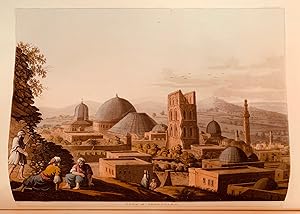
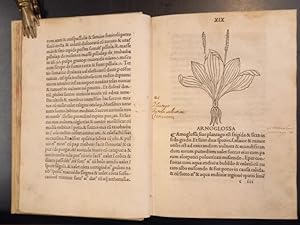
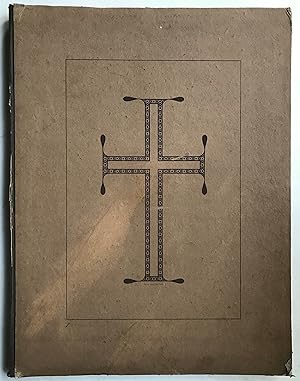
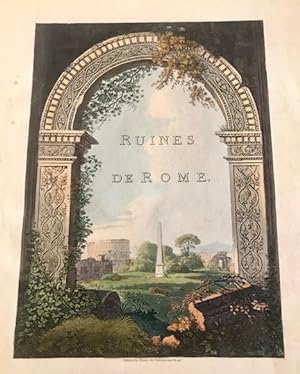
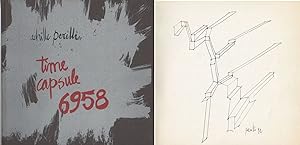
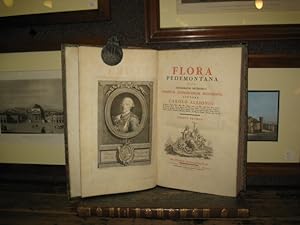
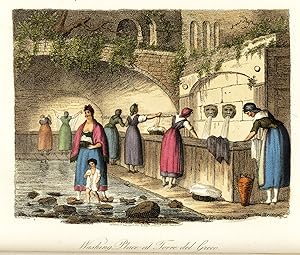
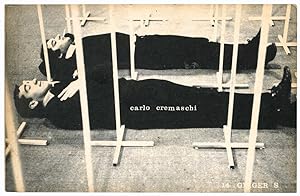
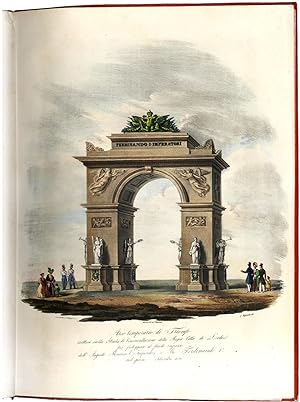
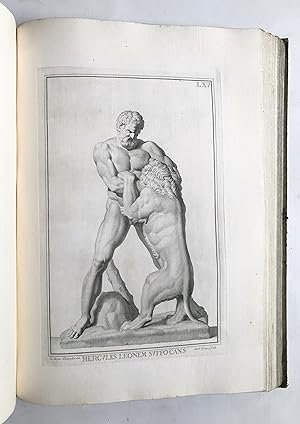
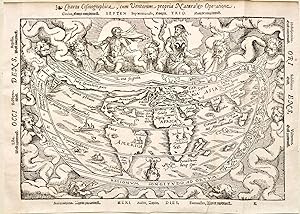
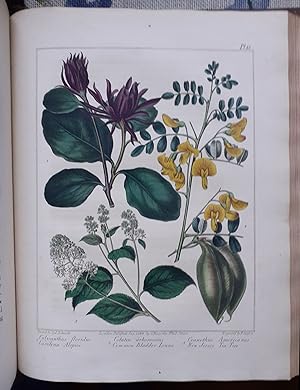
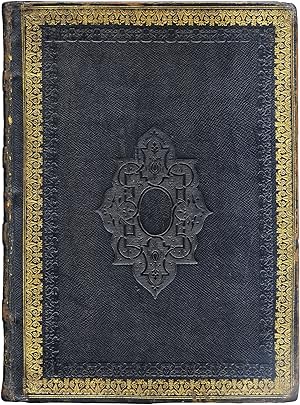
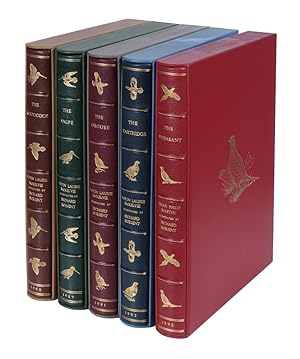
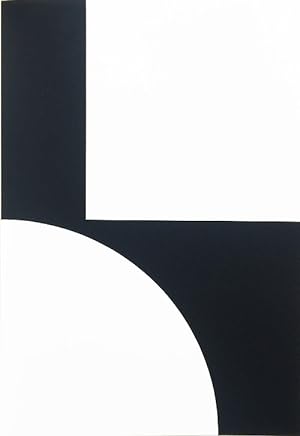
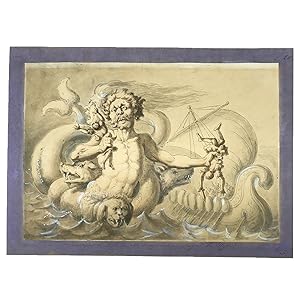
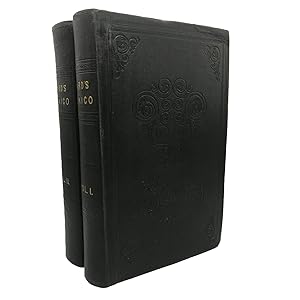
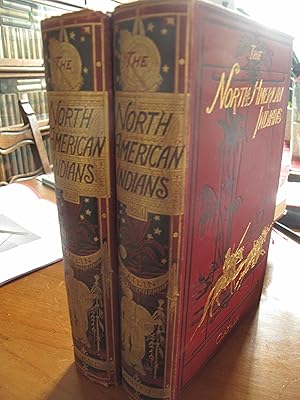
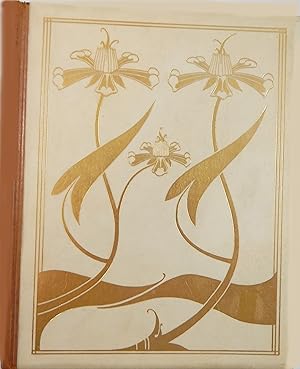

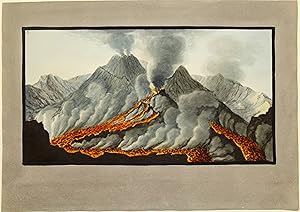
![Seller image for Historia del Nuevo-Mundo Tomo I [the only published volume] for sale by Orsi Libri ALAI, ILAB](https://pictures.abebooks.com/inventory/md/md30668628034.jpg)
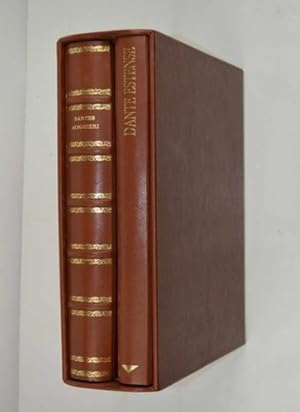
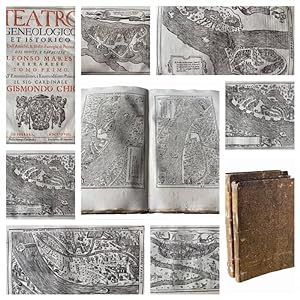

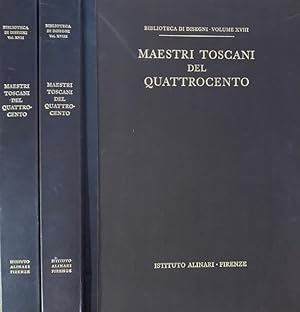
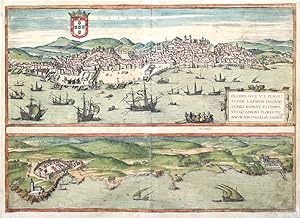
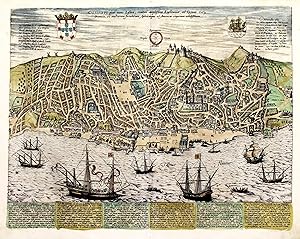
![Seller image for Taccuino di disegni di Giovannino de Grassi. Il testamento grafico del maestro lombardo del gotico internazionale. [Edizione in Facsimile] for sale by Libro Co. Italia Srl](https://pictures.abebooks.com/inventory/md/md30881929134.jpg)